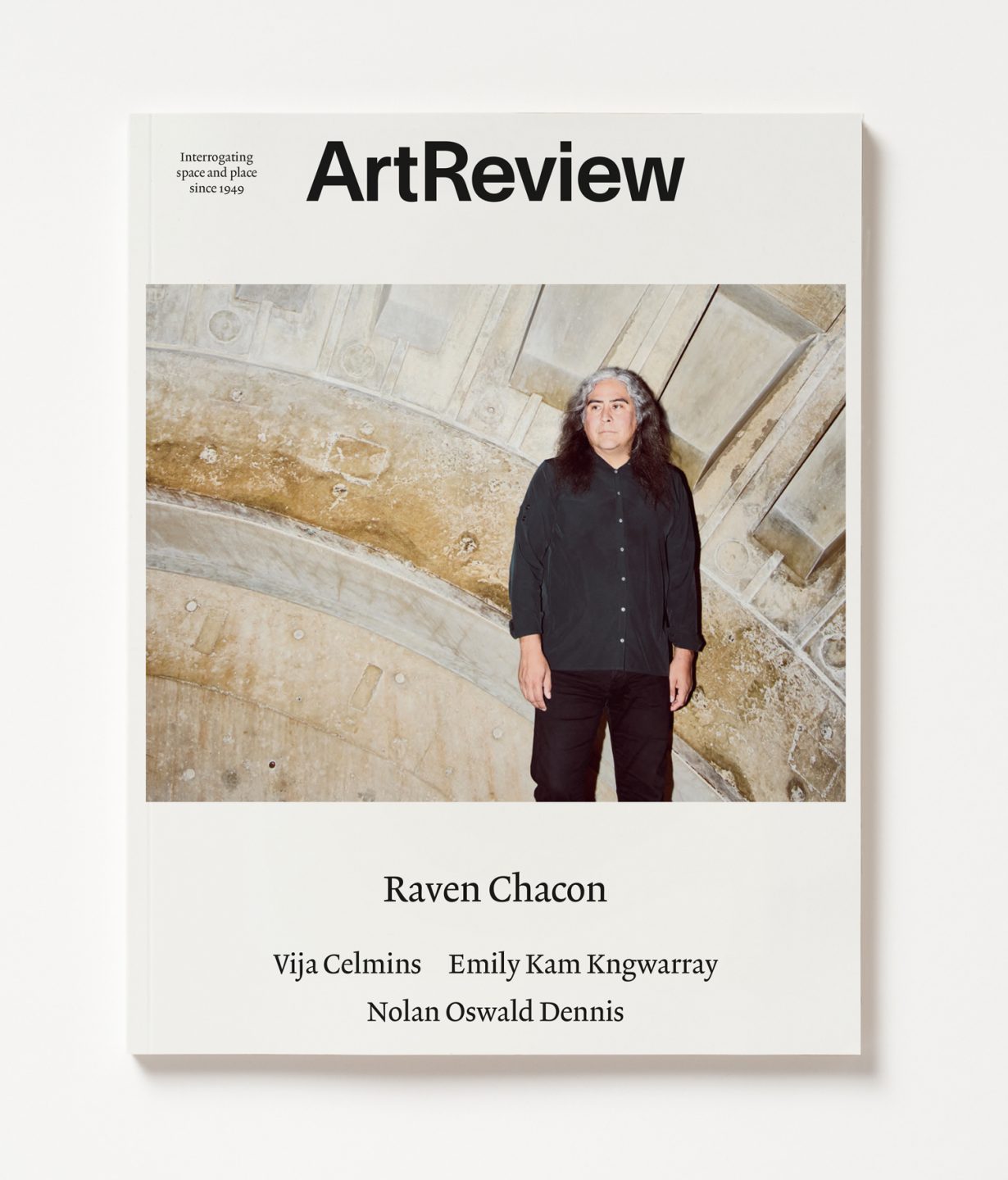
***Subscribe now or get your copy from our new online shop***
The Summer issue of ArtReview considers absences, erasures and the limits of visual representation.
Does the ‘concept of silence change when it is framed in a political context?’ asks writer Geeta Dayal of cover artist Raven Chacon’s work. “There is, of course, a silence. People are being silenced all the time,” says Chacon, taking John Cage’s iconic ‘silent’ 4’33” (1952) as a jumping off point for further explorations of silence – and lack thereof, and what these can signify. Through sound pieces and performances, the artist brings forth new ideas and ways of listening that foreground people whose voices have been suppressed. ‘To listen to Raven Chacon is to hear America not as it is mythologised, but the reality of what it is,’ writes Dayal.
Max Crosbie-Jones, meanwhile, investigates the memory of the Indonesian filmmaker Bachtiar Siagian, most of whose films were destroyed during the anti-communist purges of 1965–66. On the basis of a new documentary about the filmmaker, and an imagined reconstruction of the artist’s lost work made with footage repurposed from a fantasy-based early-2000s Indonesian TV series, Crosbie-Jones explores what it means to piece together a story from its gaps. The results, in both the documentary and the short film (which in an added layer of poignancy was cocreated by the artist’s daughter), ‘gesture towards some of the latent, underexplored ways that erasures of a tragic nature can be playfully navigated, thought through and, to a small degree, overcome’, Crosbie-Jones reflects.
The work of Vija Celmins, on the other hand, gets very close to its source material: objects from her studio, pebbles found in the New Mexico desert, photographs of skies and seascapes, from which she paints or draws near-confounding copies. ‘Her work’s many pleasures lie in its insistent made-ness, which opens up a space between the real and its double,’ writes Ben Street. ‘Get close, as the work requires you to do, and you’re at the studio table with her, redescribing the photographic description, butting up against the artwork’s inability to get close enough to what it shows.’
Oliver Basciano meets Nikita Kadan in Kyiv to discuss constructions of identity and memory. Kadan’s charcoal-on-paper pieces often depict historic artworks and artefacts, some of which were shown in the National Art Museum – where the artist’s work was on view this spring – before the full-scale invasion. His work is ‘concerned with the stories that we collectively attempt to preserve, and with those that are forgotten or hidden’.
A quarter century after the death of Aboriginal artist Emily Kam Kngwarray, Daniel Browning discusses her meteoric rise to fame at a time when there was little institutional context in which to place it. ‘When she started painting, the critics didn’t have the language to describe her work or read the iconography within it – they had no road map, let alone a pronunciation key for her bush and skin names,’ he states. Tracing her career from her first production of batiks on silk to the purchase of her works by national collections and upcoming institutional shows, Browning paints the portrait of ‘a highly motivated, energetic artist with a clear sense of purpose and almost superhuman physicality, a sublime, if risk-taking, colourist, and an extraordinarily confident maker who knew precisely what she was doing’.
Nolan Oswald Dennis ‘deploys diagrammatic mark-making to renew and renegotiate the aesthetic vocabulary of science, wresting it from the epistemic stranglehold of Western rationality and rerouting it towards Black imaginaries’, writes Zoë Hopkins. The artist’s work, which spans sculpture, film, diagrams and other less readily categorised media, takes inspiration from Black science-fiction writers and post- and decolonial thinkers alike to imagine new worlds and new connections that disturb established cosmogonies.
Also in this issue, Bex Wade reflects on the UK supreme court ruling on trans rights. ‘Defining “woman” by biological female sex isn’t just about excluding trans people from single-sex spaces, it also highlights how little respect governing bodies have for the trans community as a whole,’ Wade writes. Recalling recent antiauthoritarian protests in Poland, Kuba Szreder argues that the power of art to effect political change may be limited, but it’s not nothing.
Plus reviews of exhibitions across the world, including Gallery Weekend Berlin, Salman Toor in New York, the Bienal do Mercosul in Porto Alegre, Why Look at Animals? in Athens, Marie Farrington at Kunstverein Aughrim; and books by Uketsu, Tom Emerson, Reyner Banham and more.
***Subscribe now or get your copy from our new online shop***